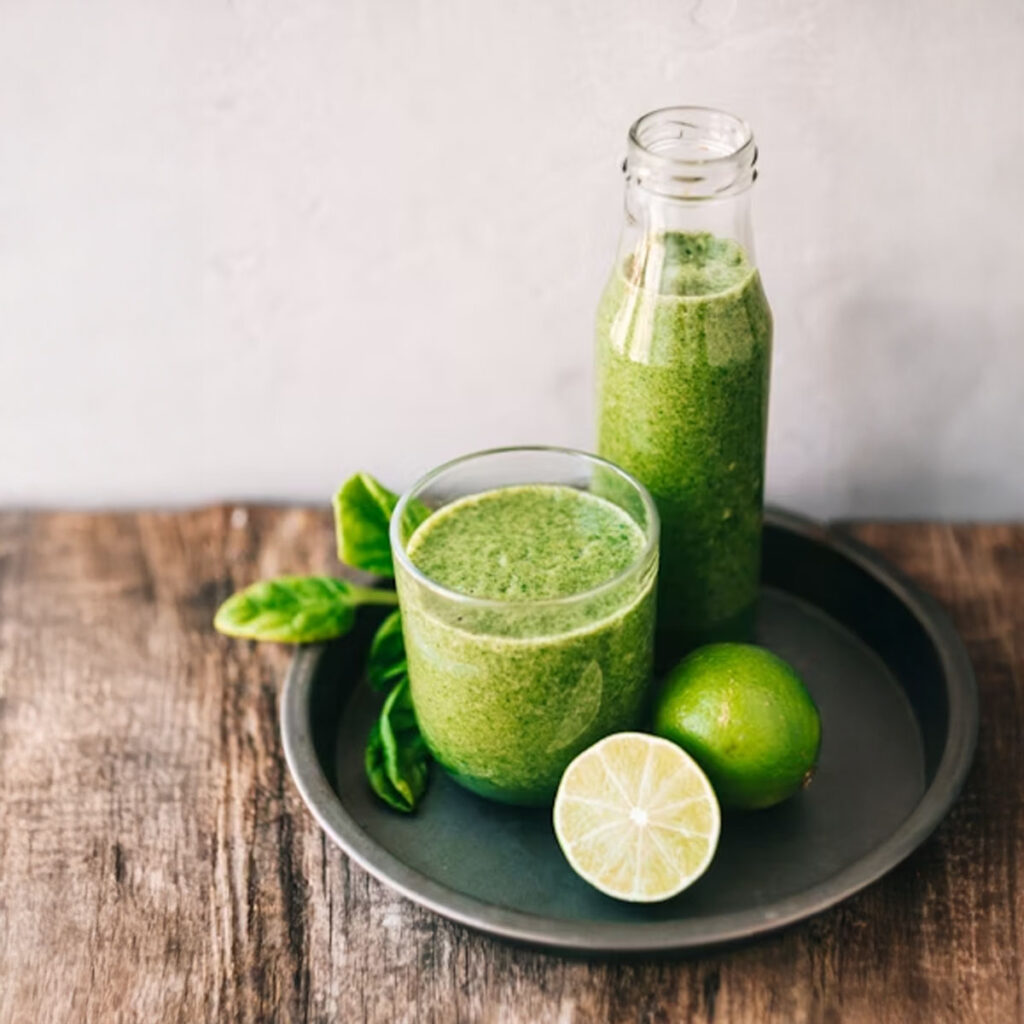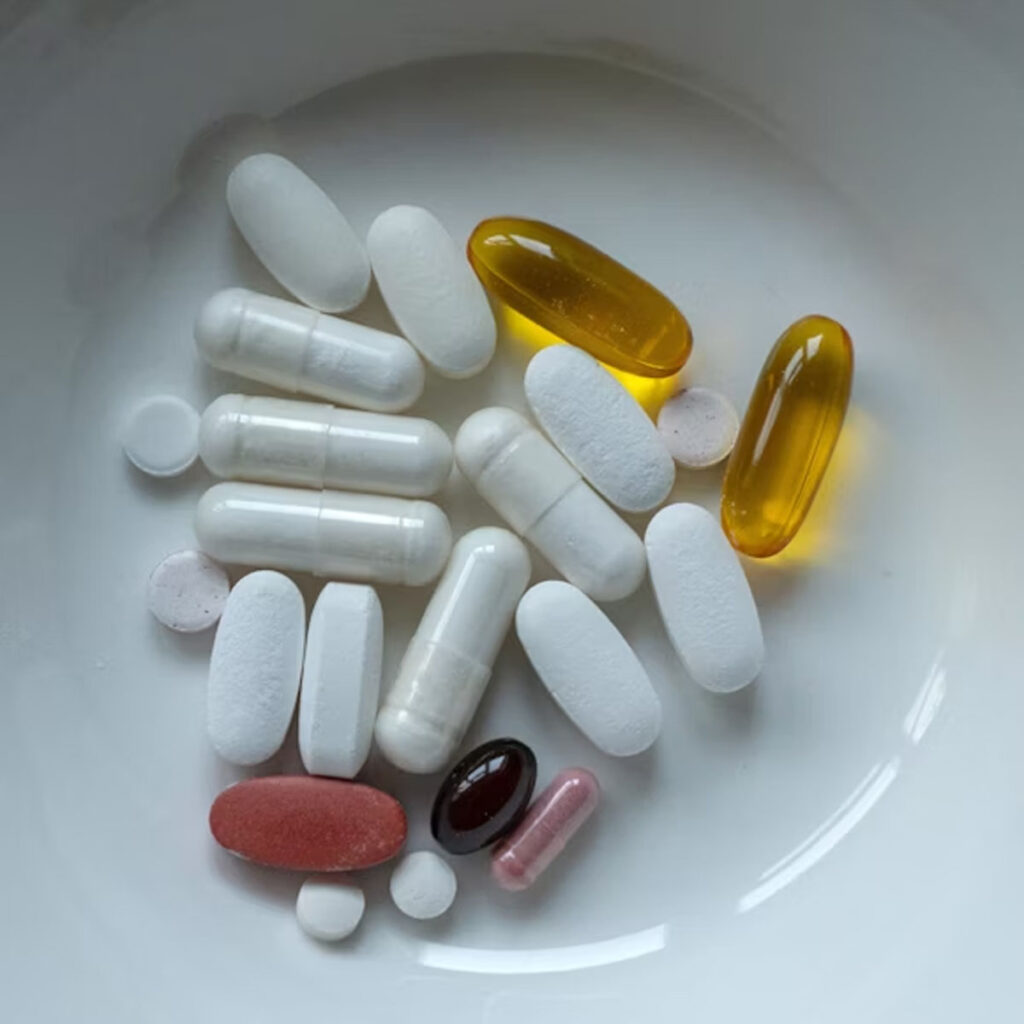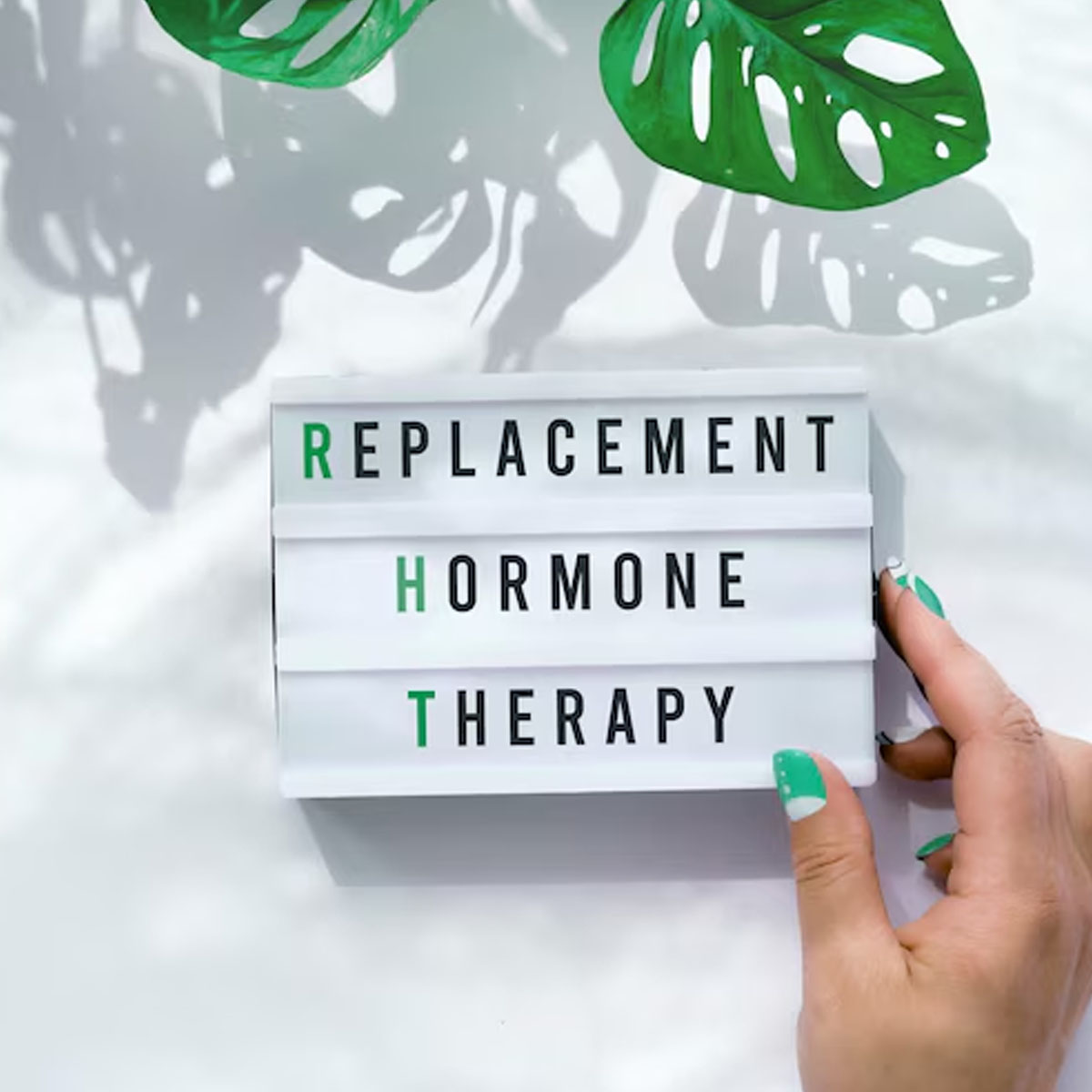Nicotinamide Mononucleotide and Cellular Health Explained
The promise of longer, healthier living has long been tied to cellular science. At the heart of this pursuit lies a small yet powerful molecule — Nicotinamide Mononucleotide (NMN). Closely related to vitamin B3, NMN has rapidly gained attention for its role in fuelling the body’s metabolic engine and supporting the natural clean-up systems within our cells. But what does this actually mean in real terms, and how solid is the science behind it?
NMN is not some synthetic gimmick. It occurs naturally in trace amounts in common foods like broccoli, avocado, and beef. More importantly, it serves as a direct precursor to Nicotinamide Adenine Dinucleotide (NAD+), a molecule essential to nearly every cellular function. As we age, our NAD+ levels fall — often by more than half — and this decline is now linked to many age-related diseases. Restoring these levels is the primary rationale for NMN supplementation. Rather than adding something foreign, the goal is to top up a fundamental substance that our bodies start producing less of over time.
Why NAD+ Decline Matters
The importance of NAD+ is hard to overstate. It participates in hundreds of metabolic reactions and sits at the crossroads of energy production, inflammation control, and DNA repair. Yet, by mid-life, our supply starts to diminish. This depletion is more than a natural footnote of ageing. It has been linked to serious conditions such as type 2 diabetes, cardiovascular disease, and neurological disorders like Alzheimer’s and Parkinson’s.
What makes NAD+ even more unique is that it serves two critical cellular roles: first, as a redox coenzyme in metabolism, and second, as a substrate consumed by proteins involved in repair and stress response, such as sirtuins and PARPs. When NAD+ drops, our cells become less efficient at both generating energy and repairing damage. NMN is positioned as a solution to this growing deficit.
Breaking Down “Cellular Detox” Scientifically
The phrase “cellular detox” often appears in wellness marketing, yet it lacks a defined medical meaning. To assess whether NMN truly supports detoxification, the term must be reframed in biological terms. Several NAD+-dependent processes align with what this concept aims to represent:
- Autophagy and Mitophagy: These are mechanisms that identify and recycle damaged proteins and organelles. NAD+ helps regulate them.
- Antioxidant Defence: Cells manage oxidative stress using enzymes supported by NAD+-linked sirtuins.
- DNA Repair: Constant damage from environmental and metabolic sources requires active repair systems that rely heavily on NAD+.
- Liver Detoxification: The liver processes and clears toxins. Its performance is a true benchmark of internal cleansing, and NAD+ is central to its metabolic functions.
By addressing each of these systems, NMN supplementation may offer a measurable way to support genuine detox and cellular maintenance, not just a vague health trend.
Fun Fact: Studies suggest that by the time humans reach 50, their NAD+ levels can fall to just 50% of what they were in youth. This decline begins as early as our 30s and may accelerate with chronic inflammation or poor diet.
How NMN Feeds the Cellular Powerhouse
Cells produce NAD+ through multiple pathways, but the most efficient method in mammals is called the salvage pathway. This is where NMN plays a starring role. When the body recycles nicotinamide — a by-product of NAD+ use — it needs an enzyme called NAMPT to convert it into NMN, which is then turned into NAD+ by NMNAT enzymes.
This makes NMN the key bottleneck in the process. Increasing NMN levels helps break that bottleneck, allowing more NAD+ to be produced. There’s also mounting evidence that orally consumed NMN can enter cells directly, thanks to a transporter called Slc12a8, which is highly active in the small intestine.
Interestingly, a similar compound, Nicotinamide Riboside (NR), has also been studied as a precursor to NAD+. NR must first convert into NMN before becoming NAD+, making NMN theoretically one step more efficient, though research comparing the two is still ongoing.
Energy Metabolism and NMN
At its core, NAD+ supports the body’s ability to convert food into energy. It acts as an electron shuttle, switching between NAD+ and its reduced form, NADH. This cycle is essential in glycolysis (which breaks down glucose), the TCA cycle (which processes nutrients inside mitochondria), and the electron transport chain — the final stage where ATP, the body’s energy currency, is produced.
When NMN increases NAD+ levels, it enhances this entire chain of reactions. Clinical studies show that NMN supplementation improves physical stamina, increases walking endurance in older adults, and supports glucose metabolism in prediabetic women. In short, cells burn fuel more efficiently and recover faster.
Sirtuins and the Ageing Process
Sirtuins are a family of proteins that help the body respond to stress, repair DNA, and regulate metabolism. They’re often dubbed “longevity genes”, and for good reason. These enzymes require NAD+ to function, meaning that declining NAD+ levels shut down sirtuin activity just when it’s most needed — during ageing.
- SIRT1 manages inflammation and metabolic stress.
- SIRT3 supports mitochondrial function and controls free radical production.
Boosting NAD+ with NMN effectively reactivates sirtuins, allowing them to resume their protective roles. This reactivation may be one of the clearest mechanisms through which NMN supports longevity and general well-being.
DNA Repair, PARPs, and NAD+ Drainage
The body’s primary DNA repair agents, PARPs, use up NAD+ rapidly when fixing broken DNA strands. This process, though critical, creates a metabolic dilemma. Constant PARP activity drains the NAD+ pool, leaving little behind for other functions like sirtuin activation. In ageing tissues, this often turns into a damaging feedback loop: more DNA damage leads to more NAD+ depletion, which weakens repair systems further.
NMN supplementation aims to correct this imbalance by restoring the NAD+ reserve, allowing cells to meet both immediate repair needs and long-term maintenance functions.
Supporting Mitochondria, Reducing Oxidative Stress
The mitochondria — often called the cell’s power plants — produce both energy and waste. As they age, they generate more reactive oxygen species (ROS), which damage DNA and proteins. NMN steps in by fuelling SIRT3, which in turn activates superoxide dismutase (SOD2), the enzyme that neutralises these dangerous radicals.
Research also shows that NMN leads to healthier, better-shaped mitochondria. These changes reduce the formation of ROS at the source, protecting cells not just from current stress but from future damage as well.
Liver Health and Metabolic Repair
The liver is a central player in detoxification. It is also one of the organs most visibly affected by age-related decline. In aged mice, NMN has been shown to reduce protein hyperacetylation, a sign of metabolic dysfunction. It also improves fat metabolism, insulin sensitivity, and even reduces the signs of liver fibrosis in early-stage disease.
Perhaps most notably, NMN’s effects in the liver seem stronger than in other tissues. This tissue specificity makes it a compelling candidate for supporting liver function in both ageing and metabolic disease contexts.
Boosting Autophagy and Tissue Regeneration
One of NMN’s most intriguing benefits lies in its ability to stimulate autophagy — the process by which cells clear out damaged components and regenerate. This is critical for maintaining youthful function, particularly in stem cells, which drive tissue renewal.
Animal models have shown that NMN helps restore stem cell vitality, especially by supporting their mitochondria and reducing cellular senescence. It may also promote regeneration in other contexts, such as hair follicle cycling, suggesting that its benefits extend beyond mere energy metabolism.
What Clinical Studies Say about NMN in Humans
Much of the early enthusiasm for NMN came from animal models, where the results were undeniably compelling. Mice given NMN showed enhanced endurance, better metabolism, and even signs of delayed ageing. However, translating these findings into human relevance requires caution. Human physiology, while similar in pathways, is not identical in outcome.
Fortunately, a growing number of randomised controlled trials have begun to provide encouraging results. Across all major studies, NMN has proven to be safe and well-tolerated at daily doses ranging from 250 mg to 900 mg. Side effects have been rare and mild, typically involving digestive discomfort or light headaches.
Key Results from Human Trials
Several human trials have found tangible benefits:
- Aerobic capacity increased among amateur runners who took 300 to 1200 mg daily.
- In men over 65, NMN improved gait speed, grip strength, and chair stand performance, suggesting stronger muscular resilience.
- A study involving prediabetic women showed a significant boost in insulin sensitivity, even at a modest 250 mg dose.
- Subjective well-being, as measured by the SF-36 health survey, also improved in several groups taking NMN over 6 to 12 weeks.
These findings support NMN’s role in boosting physical performance and metabolic health, particularly among older or at-risk adults.
However, the results are not uniformly dramatic. Many experts have noted that the gains, while measurable, are modest. NMN appears to enhance functional capacity and energy levels but does not yet show signs of being a breakthrough anti-ageing compound in humans.
Understanding the Variability in Results
One of the most revealing findings from the latest studies is the high interindividual variability in NAD+ response. The same NMN dose can lead to vastly different NAD+ increases in different people. This has important implications for how NMN should be taken.
Some researchers now suggest that personalised dosing — based on measuring NAD+ levels — may yield better outcomes. Until home NAD+ tests become affordable and widespread, the general advice is to start with a lower dose (250–300 mg) and increase gradually if desired.
Another notable observation is the plateau effect. While 300–600 mg per day produces significant improvements, increasing the dose to 900 mg does not always result in proportionally greater benefits. This finding is particularly important for consumers weighing cost against benefit.


NMN and Time-Restricted Fasting
One of the most exciting areas of NMN research involves its interaction with time-restricted fasting (TRF). This popular approach to eating — typically limiting food intake to an 8-hour window — is known to trigger cellular repair mechanisms, including autophagy and sirtuin activation.
A study in mice found that TRF alone had little effect on performance. But when NMN was added, the combination resulted in a marked improvement in endurance. NMN also enhanced mitochondrial efficiency and increased ATP production, the body’s direct energy source.
More intriguingly, TRF appeared to increase the expression of Slc12a8, the gene responsible for NMN absorption. This suggests that fasting may prime the body to absorb NMN more efficiently, creating a powerful synergy.
The takeaway: taking NMN in the morning, during a fasted state, may be the most effective timing. This approach mirrors the protocol followed by Dr David Sinclair, whose advocacy has played a large role in NMN’s rise to prominence.
Supplementation: Doses, Timing, and Food Sources
While NMN is found in foods such as edamame, avocado, cucumber, and broccoli, the concentrations are extremely low. Even the best food sources contain less than 2 mg per 100 grams. Clinical trials use doses of 250 to 900 mg, making dietary sources essentially impractical as a standalone solution.
For example, one would need to eat over 20 kilograms of broccoli daily to achieve the minimal effective dose used in human studies.
Dose Ranges
- 250 mg daily: Effective for insulin sensitivity, muscle strength, and NAD+ elevation.
- 600 mg daily: Enhanced physical endurance, higher NAD+ levels.
- 900 mg and above: May offer additional benefits, but results are inconsistent, and cost-effectiveness becomes a concern.
Side Effects and Safety
Across all trials, NMN has shown an excellent safety profile. Mild side effects, such as headaches or nausea, have been rare and generally resolve quickly. However, some caution is advised:
- Pregnant or breastfeeding women: Not recommended due to lack of safety data.
- Cancer patients: NAD+ supports cell growth, including potentially malignant cells. Therefore, NMN is discouraged for individuals with active or suspected cancer.
- Diabetics and individuals on medication: Should consult a healthcare professional due to possible interactions with insulin or blood pressure medications.
Purity and Product Quality
Because NMN supplements are largely unregulated, quality varies significantly between brands. Only β-NMN is biologically active. Some manufacturers may use α-NMN, which the body does not absorb.
When purchasing NMN, look for:
- Third-party testing and a certificate of analysis (CoA)
- GMP-certified manufacturing
- Clear labelling of β-NMN content
NMN vs. Other Detox and Longevity Supplements
How does NMN compare with other supplements often marketed for cellular health?
Nicotinamide Riboside (NR)
NR is another precursor to NAD+, with a slightly different absorption mechanism. It must first convert into NMN before becoming NAD+. Although both raise NAD+ levels, the jury is still out on which is superior. NR has shown promise, but NMN may be more efficient due to its proximity in the salvage pathway.
N-Acetylcysteine (NAC) and Glutathione
These act as direct antioxidants, neutralising ROS and supporting liver detox pathways. NMN works further upstream, enabling cells to produce fewer toxins in the first place. In this way, NMN supports clean energy metabolism, while NAC and glutathione act as defenders once damage has occurred.
Used together, they may offer complementary protection — NMN keeps the engine running smoothly, while NAC cleans the exhaust.
Regulatory Status: UK, EU, and USA
United Kingdom
In the UK, NMN is currently legal and sold as a food supplement. It does not require pre-approval unless it makes medicinal claims. However, the Advertising Standards Authority (ASA) monitors all marketing to ensure compliance with health claims regulations.
European Union
NMN is considered a “novel food” in the EU. It is not approved for sale as a supplement until it passes a full safety assessment by the European Food Safety Authority (EFSA). As such, it is not legally available from EU-based vendors.
United States
The regulatory environment in the US is unsettled. The FDA reclassified NMN based on a technicality — because a pharmaceutical company filed an Investigational New Drug (IND) application before NMN became widespread. Currently, a court order has paused enforcement, allowing continued sale, but this is subject to change pending legal outcomes.
What Consumers Should Know
None of these restrictions stems from safety concerns. They are legal or procedural. Consumers should focus on product quality and stay informed about their country’s evolving policies.
What the Science Proves — and What It Doesn’t
What We Know
- NMN increases NAD+ levels reliably in humans
- It improves physical performance, insulin sensitivity, and muscle strength
- It is safe and well-tolerated in clinical trials up to 12 weeks
- It activates multiple longevity pathways, including sirtuins and autophagy
- It may enhance the effects of fasting
What Remains Unproven
- Lifespan extension in humans
- Long-term safety beyond one year
- The ideal dose for personalised results
- Whether NMN is superior to NR
The Sinclair Effect and Market Hype
Dr David Sinclair has been a prominent voice in the field, openly discussing his personal NMN use. He takes 1000 mg daily, often combined with resveratrol. His research at Harvard has been influential, though not all data is published. This has helped shape public perception — and market interest — well ahead of full scientific consensus.
Not all experts agree. Some caution that NMN is still experimental, and its benefits, while promising, remain limited to certain measurable outcomes rather than sweeping rejuvenation.
Final Thoughts: A Useful Tool, Not a Miracle
NMN is a legitimate, science-backed intervention for those seeking to maintain energy, support repair mechanisms, and improve metabolic resilience as they age. It does not reverse ageing or extend lifespan in humans, at least not yet. But for individuals seeking practical ways to preserve vitality, NMN offers a real, measured benefit when used correctly.
Its strongest effects appear in older adults and those with mild metabolic dysfunction. Younger, healthy users may see smaller gains, though it remains safe.
Pairing NMN with time-restricted eating, clean diet, and regular exercise may yield compounded benefits. As with all supplements, it should be approached with care, not as a cure-all but as a tool in a broader strategy for healthy ageing.








